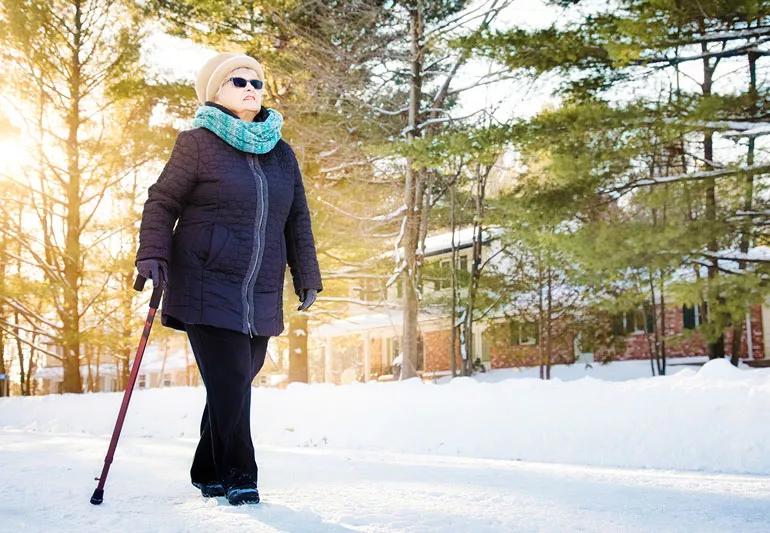Staying active plays a critical role

The word “frail” often is used to describe the appearance of an older adult. The term itself suggests vulnerability, slowness and disability. The medical definition of frailty requires that three of these characteristics be present:
Advertisement
Cleveland Clinic is a non-profit academic medical center. Advertising on our site helps support our mission. We do not endorse non-Cleveland Clinic products or services. Policy
Unfortunately, low physical activity is a common way of life for many Americans. “I can honestly say that physical activity and/or exercise is probably the most difficult prescription for my patients to fill,” says geriatric specialist Ronan Factora, MD.
We asked Dr. Factora how you can avoid getting frail as you age.
Dr. Factora says, with older adults, much of their time is spent in sedentary pursuits.
“If they’re not watching TV, then they’re in front of some type of a screen (such as a computer or handheld device), reading, doing puzzles — anything but moving around,” he says. As a result, the muscles in these older adults lose their functional capacity and tone, and may eventually become infiltrated with fat.
Aside from the obvious change in muscle tissue, an older adult’s ability to function is also affected. “As a result, this also leads to reported physical exhaustion, muscle weakness, and potentially a decline in walking speed,” says Dr. Factora.
He says lack of physical activity alone also could lead to decline in walking speed due to a loss of muscle tone, muscle function, and cardiovascular endurance.
Advertisement
“Low physical activity is not only a consequence of weight loss and muscle mass loss — it can become a cause,” says Dr. Factora.
This leads to a downward spiral in consuming adequate calories. Dr. Factora says when you’re not physically active, your appetite dwindles, and this can lead to inadequate protein and calorie intake which are what your body uses to maintain muscle mass and support further physical activity.
“Higher physical activities compel a person to actually eat more and replenish their body with the calories it needs.”
It’s clear how all of these frailty characteristics are interrelated. “Developing frailty does not happen overnight,” says Dr. Factora. “It takes years for frailty syndrome to develop as a consequence of low physical activity and weight loss. When it does develop, reversal is extremely difficult.”
Generally speaking, people want to maintain independence and a good quality of life while aging, and they want to avoid disability as much as possible. Many people mistakenly assume frailty is part of normal aging. It’s true that many aging persons do become frail, but there are a number of interventions that can prevent or even reverse frailty.
Though it may seem simple, all individuals should do the following to help reduce the risk of developing disability and frailty:
“Making a physical activity routine sounds easy and straightforward, but from my clinical perspective, regular exercise can be difficult for older patients to sustain,” says Dr. Factora.
Despite the challenge, this simple intervention can be the foundation for avoiding frailty and disability and maintaining independence into later life.
Advertisement
Learn more about our editorial process.
Advertisement

You can improve your athletic performance over time by breaking up your workout regimen into focused cycles

Physical activity can help preserve and improve your cognitive function and fend off dementia, stroke and other health concerns

Your tolerance decreases with age, thanks to body changes, health conditions and medications you may take

Lower-intensity workouts can deliver high-quality health and fitness results

Incremental changes in your exercise routine can improve your strength and endurance over time

Understanding heart rate zones can help you tailor your workout to reach your goals

Increase the size of your muscles by bulking up on protein and focusing on slow, intense movements with progressive overloading

Low-impact exercises help you recover faster between sets, during cool downs and on rest days

Babies can get congested easily, but you can calm their cough by keeping them hydrated, using nasal drops and running a humidifier

Weight loss may cause loose, sagging skin and muscle loss to your rear

Several conditions, like vitiligo and fungal infection, can cause a loss of pigmentation, leading to white spots or patches on your skin